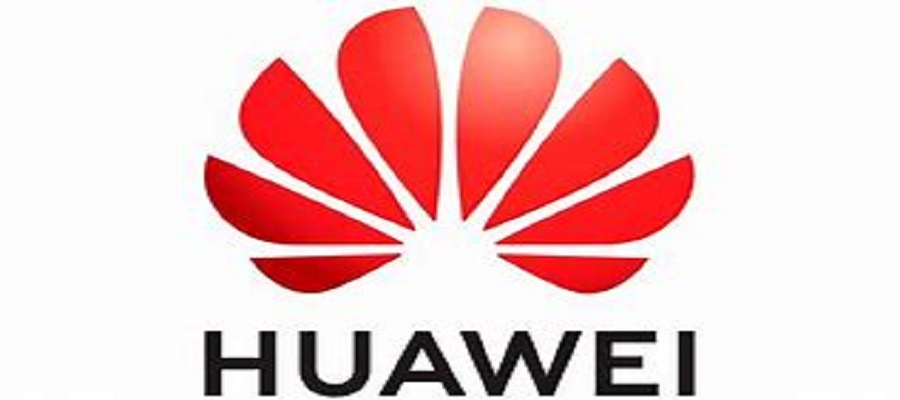E-Business
Personalisation, Others to Drive Marketing Comms in 2017- Experts

Integrated Marketing Communications (IMC) experts have projected that personalised marketing, performance and convergence through collection of consumer data will be key drivers of marketing communications in 2017 and beyond as brand owners seek to build on their equity and return of investment (ROI) despite the recession.
At a gathering of digital marketing agencies, brand owners, IT experts and media practitioners, tagged “An Evening of Innovation with Twinpine – Africa’s pioneer and premium mobile marketing company”, Oduntan Odubanjo, chief operating officer at Twinpine noted that globally, data will continue to transform mobile marketing, while the challenging economy will make more brand owners pay extra attention to performance and build on personalised communication to reach their target customers.
During his presentation titled: “Personalisation, Convergence and Performance: How Data is Transforming Mobile Marketing”, Odubanjo stated that the promise of data is to help brand personalised marketing messages, connect more with their customers and deliver seamless experiences.
“Data collection helps to understand the consumers’ demography, needs, and behavior thereby making it possible to personalise messages for them. This makes it possible to have better consumer experiences, improved satisfaction, and more loyalty.
“We are also seeing a convergence of media platforms as it has become more difficult to focus on one media channel, hence, the need for data has also become important” he said.
Commenting on the future of mobile marketing, Odubanjo, said “there will be more brands looking into their data offerings and strategy”. He projected that “local brands will begin to look more into collecting data about their customers and request for more targeting to ensure that their budgets are well spent.”
According to Elo Umeh, founder of Twinpine, Twinpine has done a lot of work on data in the last 5 years of its existence.
“We have generated data and are constantly doing more to deliver value around data for our clients. This is fueled by our belief that more can be done as the data space gets intelligent and smarter with the increasing use of smartphones.
“The use of apps and internet connectivity between the devices helps to generate lots of data which is very helpful in the data gathering process,” he said.
Predicting the year 2017, Umeh said that some brands will frame their narrative around cost-cutting while some brands will become more aggressive in their marketing by spending more to improve their market share.
“We think that it’s in adversity that you can try to do very interesting things. For example, Twinpine was launched in 2009 – in the middle of a global recession. When there is a boom, there is limited opportunity because there are lots of people in the market but when there is adversity there are limited people in the market and they benefit from it in the long run.”
During the panel session at the event, which consisted of Odutan Odubanjo, Oti Ukubeyinje, Media Director at Sponge Digital, Jumoke Okikiolu, head product Marketing at Samsung West Africa, John Iseghohi, Digital Marketing & Strategy at Etisalat and Tunde Kara, Managing Director Sales, Nigeria, the panelists agreed that in the coming year, a lot will happen in personalised marketing and convergence.
Brands need to think of how to infuse marketing into content in a way that consumers feel like they are actually having a personal communication with brands.
At the event, Twinpine unveiled its new ad formats (Native Ads, 3D Ads, Brand Cast, Call-to-Action Ads), Twinpine’s Mobile Intelligence Portal, Programmatic Platform and Adrenaline
E-Business
Attackers Target Employees with Fake HR Updates

Kaspersky has identified an advanced phishing campaign targeting employees with personalised emails and attached documents disguised as HR policy updates.

This campaign marks a significant escalation in phishing tactics, with attackers tailoring not only the email body, but also the attachments by addressing individual recipients, showcasing an unprecedented level of customisation. The goal was to lure the victim into entering their corporate email credentials.
The attackers likely prepared by parsing employee names to make the campaign targeted and more convincing.
The emails feature a deceptive body: a fraudulent “verified sender” badge to build trust, the recipient’s name, and an invitation to open the attached file to review remote work protocols, benefits administration and security standards. However, the whole email body is in reality just an image with no real text in it; this is done to bypass email filters.
The attached document, posing as an updated “Employee Handbook,” does not contain any actual guidelines – only a title page, a table of contents with the items that have supposedly been changed highlighted in red, a page with a QR code, supposedly for going to the full document and common instructions on how to read QR codes using a phone. The document features the victim’s name multiple times to convince that this document was created specifically for them.
If the victim scans the QR code and follows the link, they land on a fraudulent page where they are asked to enter their corporate credentials, which is what the attackers are hunting for.
“This campaign demonstrates a new level of sophistication in phishing attacks, and we may be seeing a new mailing automation mechanism that generates a separate attached document and a separate image for the email body for each recipient.
“This tactic allows to scale the attack and at the same time possibly evade traditional defenses. Organisations must prioritise advanced security measures and employee education to stay ahead of these threats,” comments Roman Dedenok, Anti-Spam Expert at Kaspersky.
E-Business
Temu Joins INTA to Combat Counterfeits and Elevate IP Standards Worldwide

Temu, the global online marketplace, has joined the International Trademark Association (INTA) as a corporate member and serves on its Anti-Counterfeiting Committee.

INTA is a global association that brings together more than 6,700 organizations, representing over 37,000 trademark professionals and brand owners across 181 countries. By joining INTA, Temu deepens its commitment to building a trusted online marketplace and advancing global IP protection through broader, cross-industry collaboration.
“INTA welcomes TEMU’s willingness to engage in anticounterfeiting initiatives, including in the Association’s annual Anticounterfeiting Workshop and Online Takedown Certificate Program which serve to share best practices and connect stakeholders,” said Alastair Gray, Director of Anti-Counterfeiting, INTA. “Constructive collaboration with these efforts can contribute to the protection of intellectual property rights for INTA members and support the removal of counterfeit products from the platform which ultimately protects consumers.”
At the 2025 INTA Annual Meeting held in San Diego in May, Temu participated in the Anti-Counterfeiting Committee Roundtable, serving as a moderator to facilitate discussions among brand owners, online platforms, and government officials on emerging technologies, best practices for collaboration, and strategies to strengthen global anti-counterfeiting efforts.
“Joining INTA and serving on its Anti-Counterfeiting Committee reflects Temu’s ongoing commitment to ensuring a trustworthy online shopping experience,” said a Temu spokesperson. “We value collaboration with industry peers and stakeholders and are dedicated to advancing collective efforts in intellectual property protection.”
Temu also participates in INTA-led online workshops, including the Online Platform Notice and Takedown Certification Program, which outlines the latest procedures and best practices used by e-commerce platforms and social media companies. These workshops aim to enhance the quality and accuracy of rights-holder notices, promoting more effective takedown processes and content moderation.
Since launching in 2022, Temu has made significant investments in IP enforcement. Its measures include comprehensive seller vetting and compliance training, 24/7 algorithmic monitoring with manual review, a dedicated IP protection portal and brand registry to streamline takedown submissions, and an internal enforcement team that handles claims with speed and accuracy.
E-Business
Huawei Unveils AI Computing System to Challenge Nvidia’s Flagship Product

China’s Huawei Technologies unveiled an AI computing system on Saturday that an industry expert said rivals Nvidia’s most advanced product, as the company aims to expand its footprint in the country’s booming AI sector.

The CloudMatrix 384 system made its public debut at the World Artificial Intelligence Conference (WAIC), a three-day event in Shanghai, attracting a large crowd to Huawei’s booth with its showcase of cutting-edge AI innovations.
The system has attracted significant interest from the global AI community since Huawei (HWT.UL) first introduced it in April. Industry analysts see it as a direct challenger to Nvidia’s GB200 NVL72, the most advanced system-level offering currently available from the U.S. chipmaker.
In an April article, Dylan Patel, founder of semiconductor research firm SemiAnalysis, stated that Huawei now possesses AI system capabilities that could surpass those of Nvidia.
Huawei staff at its WAIC booth declined to comment when asked to introduce the CloudMatrix 384 system.
A spokesperson for Huawei did not respond to questions.
Huawei has become widely regarded as China’s most promising domestic supplier of chips essential for AI development, even though the company faces U.S. export restrictions.
Nvidia CEO, Jensen Huang told Bloomberg in May that Huawei had been “moving quite fast” and named the CloudMatrix as an example.
The CloudMatrix 384 system features 384 of Huawei’s latest 910C chips and, according to SemiAnalysis, surpasses Nvidia’s GB200 NVL72 in certain performance metrics, despite the latter using 72 B200 chips.
SemiAnalysis attributes this performance advantage to Huawei’s strong system design, which offsets the lower power of individual chips by leveraging a greater number of them and incorporating system-level innovations.
Huawei describes the system as utilizing a “supernode” architecture that enables ultra-high-speed interconnectivity between chips.
In June, Zhang Pingan, CEO, Huawei Cloud confirmed that the CloudMatrix 384 was already operational on Huawei’s cloud platform.

 E-Financial3 days ago
E-Financial3 days agoUnion Bank Rewards Customers with ₦5 Million Each in Save and Win Palli Promo Season 4 Grand Finale

 E-Business3 days ago
E-Business3 days agoHuawei Unveils AI Computing System to Challenge Nvidia’s Flagship Product

 E-Financial3 days ago
E-Financial3 days agoEdun, Finance Minister Inaugurates NDIC New Management

 News3 days ago
News3 days agoLawyers Drags NLS to Court for Alleged Election Fraud, Data Violation

 Telecom2 days ago
Telecom2 days agoGlo Boosts Network Capacity for Enhanced Customer Experience

 General News3 days ago
General News3 days agoNew Tax Law Empowers NRS to Fine Offenders up to N10m

 News2 days ago
News2 days agoTranscorp Power Posts Strong Half-Year Profit, Declares ₦11.25Bn Dividend

 Broadcasting3 days ago
Broadcasting3 days agoCourt Upholds AVRS Legal Rights to Licence Audiovisual Works in Hotels















